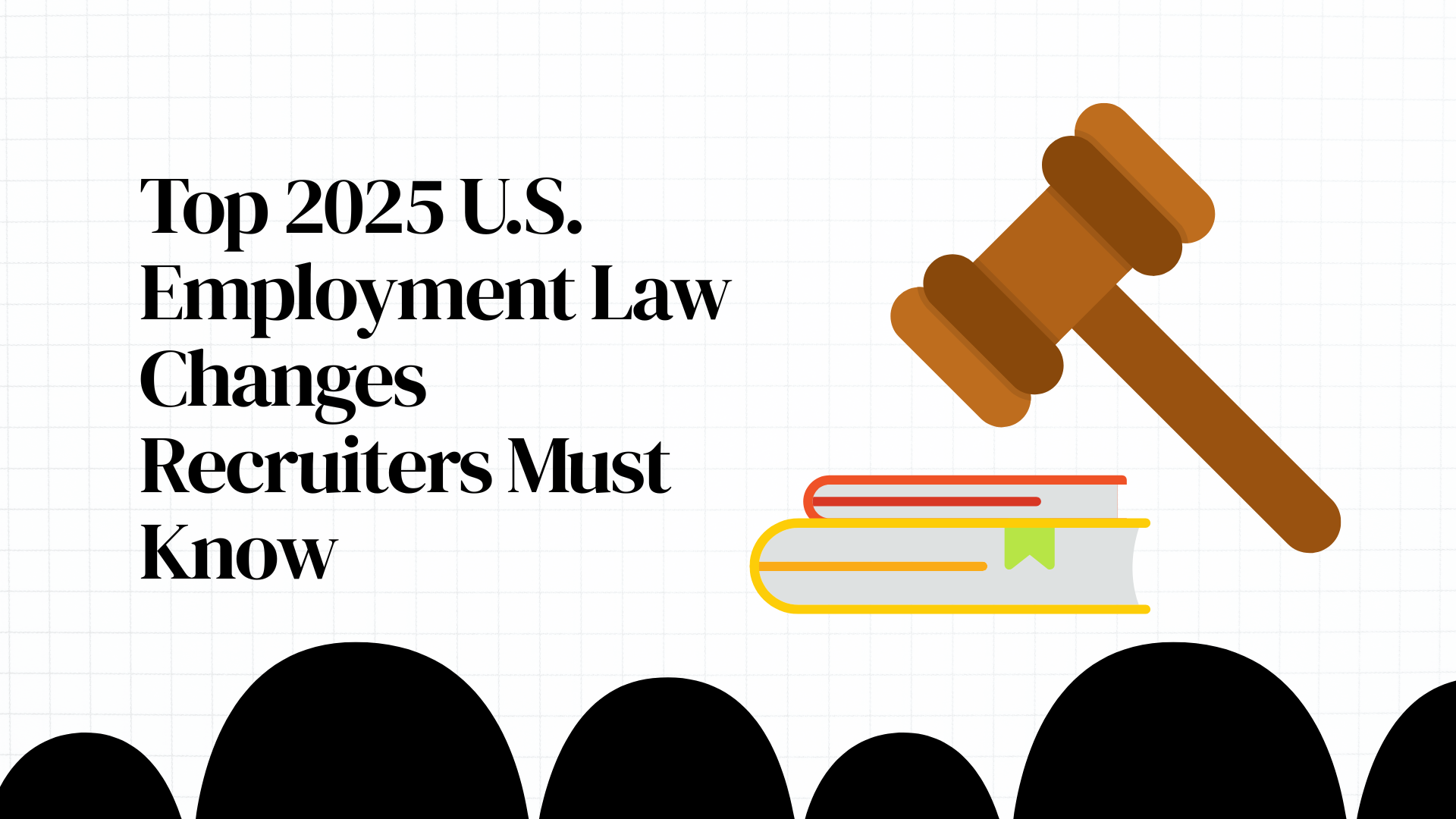As we swiftly approach the second half of 2025, U.S. employment law continues to evolve rapidly, bringing new compliance challenges – and opportunities – for employers and recruiters. Whether you’re hiring directly or working with an Employer of Record (EOR), failing to keep up with these shifts could lead to serious legal penalties and reputational damage.
We’ve summarized the most impactful changes in U.S. employment law so far in 2025 that you need to know.
Federal Wage Transparency Legislation Takes Effect
Following years of local initiatives, five new states have enacted pay transparency laws in 2025. These laws require employers to include compensation information in job postings, expanding the patchwork of regulations recruiters must navigate.
- Illinois – as of January 1st, The Pay Transparency Amendment to the Illinois Equal Pay Act of 2003 requires that employers with 15+ employees to include in job postings a wage or salary range and a general description of the benefits and other compensation (including bonuses, stock options, etc.) for the position. Applies to roles performed in Illinois or reporting to an Illinois-based supervisor or office.
- Minnesota – effective as of January 1st, The Minnesota Omnibus Labor and Industry Policy Bill requires employers with 30+ in Minnesota to disclose in job postings the starting pay range and a general description of all benefits (including health and retirement benefits) and other compensation offered for the position.
- New Jersey – coming into effect from June 1st, 2025, New Jersey Senate Bill No. 2310 will apply to employers with 10+ employees over 20 calendar weeks each year that do business, employ workers, or take applications for employment in New Jersey; it is not yet specified whether all ten employees must be in New Jersey. The bill requires disclosure of compensation and benefit information in job postings for both internal and external applications.
- Vermont – as of July 2025, employers with five or more employees will be required to include the compensation or range of compensation for the job opening.
- Massachusetts – from October 29th, The Massachusetts Frances Perkins Workplace Equity Act will require employers with 25 or more employees in the state to disclose pay ranges in job postings.
Why pay transparency matters for recruiters:
- It increases candidate trust and application rates
- Reduces negotiation gaps and equity risks
- Requires coordination with hiring managers and legal teams to publish accurate salary bands
AI in Hiring Now Regulated Under New Federal Guidelines
In October 2023, President Biden issued Executive Order 14110 on the “Safe, Secure, and Trustworthy Development and Use of Artificial Intelligence.” While federal regulations are still in progress, several states have already acted to regulate AI in employment decisions.
- Illinois: House Bill 3773 amends the Illinois Human Rights Act, prohibiting discrimination by AI tools in hiring based on protected classes.
- New York: The NYC Bias Audit Law (Local Law 144), effective since July 2023, requires employers using automated employment decision tools to conduct annual bias audits and disclose the results.
- Texas – House Bill 1709 (pending, possibly effective Sept 2025) aims to ensure transparency and fairness in the use of AI for hiring and background checks.
- Colorado: Senate Bill 24-205, set to take effect in February 2026, mandates employers to perform bias audits on high-risk AI systems used in employment decisions and implement risk management policies to prevent algorithmic discrimination.
(Note: California has not yet enacted AI-specific hiring laws but is actively reviewing proposals.)
Recruiter takeaways:
- You must disclose AI use in the hiring process to candidates
- Vendors of AI tools must now provide audit documentation
- Risk of legal exposure if tools are not compliant
Paid sick leave changes
As of 2025 Alaska, Missouri and Nebraska start to mandate paid sick leave, while Connecticut’s paid sick leave law will expand over the next three years, meaning the law will apply to employers employing 25 workers or more in Connecticut, and more than 11 as of 2026.
Michigan Michigan’s paid sick leave entitlements has been amended, effective February 21, 2025. It will now be replaced by the Earned Sick Time Act which requires employers with 10 or more employees nationwide to provide one hour of paid sick time for every 30 hours opposed to every 35 hours worked under the old law, with a maximum use and carryover cap of 72 hours up from 40.
Find out which states mandate paid sick leave in our last blog.
401k Updates
On a federal level the “highly compensated” threshold, relating to retirement plans, will increase from $155,000 to $160,000.
Traditional 401(k)
In traditional 401(k) employee contributions will cap at $23,500. The catch-up deposits for individuals aged 50 and older will remain at $7,500.
Partnering up with an Employer of Record can help you keep on top of state and local regulations for you, so you can focus on making placements – get in touch today.
